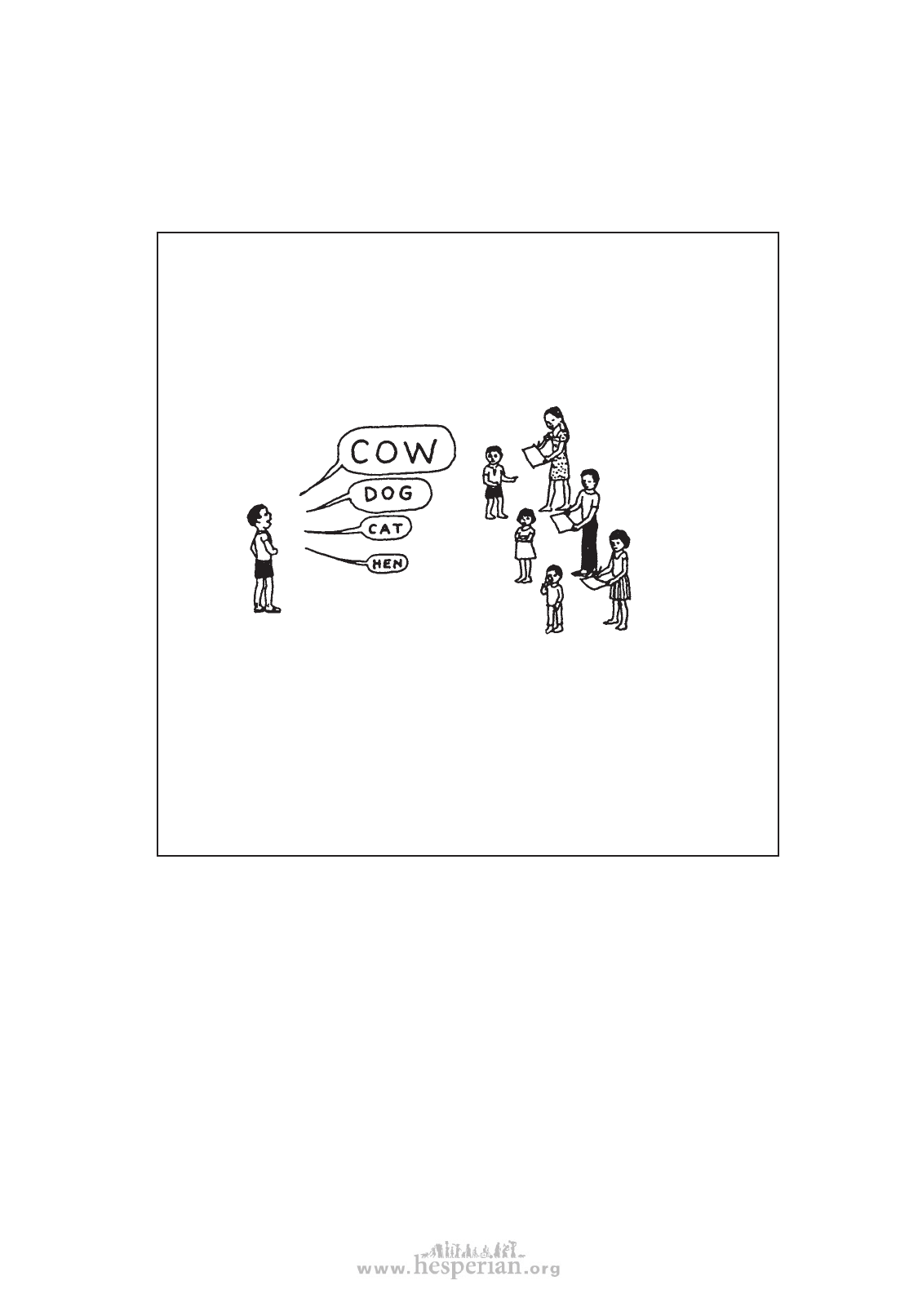
CHILD-to-child
If the baby does not show surprise or turn her head with any of these sounds, she
may have a severe hearing problem If she responds only to certain sounds, but not
to others, she has some hearing. But she may not be able to understand language
well because she cannot tell certain words apart. As a result, she may not speak as
early or as clearly as other children and will need special help. (See Chapter 31.)
451
Testing the hearing of young children (a game)
• An older child stands several meters from a line of younger children.
• Behind each young child stands an older child with pencil and paper.
• The first child
says the name
of an animal
VERY LOUDLY
• The young children
whisper the word to
their older partners.
• The older children
write it down.
• Then the first child names other animals, each in a softer and softer
voice, until he is whispering.
• After about 10 animals have been named, and the words that the
younger children heard have been written down, compare the different
children’s lists.
• Repeat this 2 or 3 times
• Any child who has not heard as many words as the others, or
has not heard them correctly, probably has a hearing problem.
What to do for the child with a hearing problem
• Let the child sit at the front of the class where he can hear better.
• Be sure everyone speaks clearly and loudly enough. But do not shout because
shouting makes the words less clear. Check often to make sure the child
understands.
• Have one child who hears well sit next to the one who hears poorly—to repeat and
explain things if necessary.
• Always try to look at the child while you are speaking to him.
• If possible, the child should be examined by a health worker—especially if he has
pus in an ear or frequent earache.
disabled village children